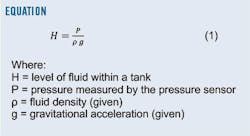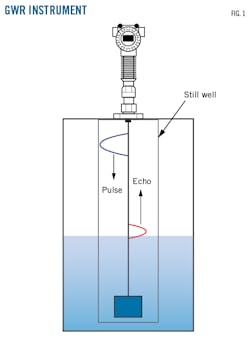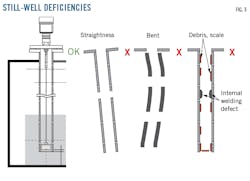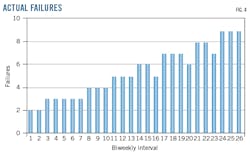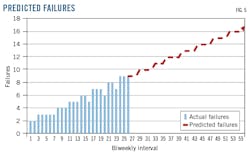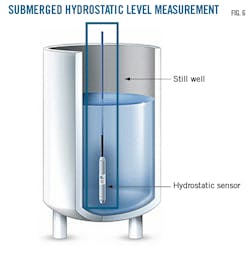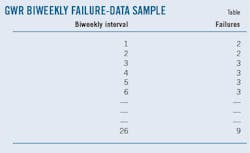Submerged hydrostatic level measurement replacing GWR
Saeed Al-Alloush
Lahdan F. Al-Faihan
Saleh M. Al-Ghamdi
Mauro Godoy
Saudi Aramco
Dhahran, Saudi Arabia
Submerged hydrostatic level measurement in liquids storage tanks is a viable replacement for guided-wave radar (GWR) in the same application and can be installed without interrupting operations. This article will address observed deficiencies in GWR and the change’s potential impact on operations at Saudi Aramco’s 400,000-b/d Jazan refinery complex.
GWR sensors send high-frequency microwave pulses along a steel cable or rod. Upon reaching the product surface, the pulses are reflected. Elapsed time is evaluated by the instrument and converted to a level.1
The system’s emergency shutdown (ESD) transmitters have a steel cable probe for continuous level measurement and a centering weight at the end of the probe installed inside a carbon steel standpipe or still well. The still well is used to host and protect the GWR sensor wire (Fig. 1). Any deficiencies in standpipe or still well installation or fabrication may cause the GWR transmitter to malfunction.2 3
Process description
GWR level transmitters were installed in all tanks in Jazan’s tank farm. Each has one ESD transmitter for overfill protection, closing the inlet valve and affecting both downstream and upstream processes.
The refinery’s high-sulfur diesel (HSD) tank farm stores production onsite. Stored HSD can be exported as a final product or sent to the diesel hydrotreater (DHT)4 for additional processing. The DHT produces ultra-low sulfur diesel (ULSD, 10-ppm sulfur) by processing the high-sulfur diesel (13,000 ppm sulfur) feed from the HSD tank farm.
These tanks are equipped with GWR to measure tank level and protect against both overfill and low levels. Any interruptions of level measurements on HSD tanks can affect DHT operation and may result in unit shutdown, which in turn could lead to economic loss and unplanned effects on both downstream units and the crude unit. The absence of accurate level measurements can also delay HSD exports. Fig. 2 is a block diagram of this part of the refining process.
Level-measurement issues
The diesel tanks use GWR for ESD to protect the tank and eliminate overfill. Tank overfill can lead to a serious incident, such as the 2005 Buncefield explosion in England.5 Failure may also cause lost production and export delays.
GWR is a proven level-measurement technology. It sends a pulse through a wire and listens to the reflected echo to determine the level inside a tank. The reflected echo is created when the pulse touches the surface of liquid inside a tank or vessel. By knowing the time and speed of the pulse, the level inside a tank is determined.
GWR operation is highly dependent on the installation of the still well. Any installation deficiencies may cause GWR to malfunction when the GWR wire touches the still-well wall.1 Debris or scale accumulated in the inner part of the still well also can result in GWR failure (Fig. 3).
Jazan refinery’s tank farm encountered these GWR still-well deficiencies. Major issues identified related to still-well installation and fabrication defects like straightness or bending, excess internal debris or corrosion scales, and excess welding material in the still-well pipe joints. These issues affect transmitter signal-strength reflection and the reliability of the level transmitter.
Analysis
To assess the magnitude of this problem, Aramco developed a model to predict future failures via machine learning. One year of real-time distributed control system (DCS) data were collected and analyzed.
The data have two attributes: biweekly numbering and how many failures of GWR readings occurred. Some 2-week intervals had zero failures and others had between two and nine. The data were fed into a linear regression-based supervised machine-learning model.
Table 1 provides sample data, with a data point plot shown in Fig. 4.
Thirteen out of 26 data points trained the linear-regression supervised machine-learning model. The other 13 data points were used to validate the model.6 Validation revealed that about 70% of data points fit into the machine learning model, an acceptable threshold to depend on it to predict future failures. When the machine learning model was used to predict future failures, it showed them to be increasing as a function of time. Fig. 5 shows predicted failures.
Developing the machine learning model provided a high degree of confidence about GWR failure and provided the basis for evaluating alternative solutions. One was to accept the GWR failure rate and not take further action. This solution was rejected. Another solution was to fix the still well. This option required taking a tank out of service, which would consume time and resources and adversely affect operations. Instead, Aramco found technology that was easy to implement, selecting submerged hydrostatic level measurement (SHLM) as the optimal solution.
Proposed solution
Mechanical correction of the still well was not practical due to the major modification required and the need to shut down processes to implement the correction SHLM was installed as a replacement technology in two of the product tanks as a pilot. The transmitter performed without failure for 8 months. Based on the results, SHLM replaced GWR in 60 product tanks at Jazan refinery. It was unaffected by still-well defects, installed without shutdown, and used the existing nozzle and wiring from the GWR installations without modification.
SHLM uses a pressure sensor that measures the pressure caused by the weight of fluid above it. Tank level is determined using Bernoulli’s principle (Equation 1). It can be installed as submersible from the top of a tank, given the presence of GWR’s nozzle and wiring. No mechanical modification on the tank is required. Fig. 6 illustrates the technology.
This is not, however, the proper level measurement technology for fluid with variable density, as a given density plays a role in determining tank level. SHLM also has a working temperature range of -4° C. to 100° C.
SHLM can be used for atmospheric tanks or pressurized tanks. In the case of pressurized tanks, a differential pressure sensor is used, increasing measurement reliability.
Acknowledgment
The authors would like to thank Saudi Aramco Process & Control Systems Department management and Jazan Refinery Complex management for their cooperation in work towards implementation of the new technologies.
References
- Krolak, A., “What Are the Benefits of Guided Wave Radar for Level Measurement in Process Industries?” ISA Interchange, International Society of Automation, https://blog.isa.org/benefits-guided-wave-radar-level-measurement-process-industries-industrial (accessed Jun. 20, 2022).
- Emerson Electric Co., “Best Practices for Using Radar in Still Pipes and Chambers,” Technical Note 00840-0300-4024 Rev. DC, August 2022.
- Inst Tools, “Stilling Wells for Level Measurement,” Dec. 19, 2017.
- Zhu, F., Hoehn, R., Thakkar, V., and Tuh, E., “Diesel Hydrotreating Process,” Hydroprocessing for Clean Energy: Design, Operation, and Optimization, John Wiley & Sons Ltd., 2017, pp. 23–49.
- Lewis, K., “Buncefield explosion: ‘I thought a plane landed on us’,” BBC News, Dec. 11, 2015.
- Tam, A., “Training-validation-test split and cross-validation done right,” Machine Learning Process, Sep. 23, 2021.
The authors
Saeed Al-Alloush ([email protected]) is an engineering consultant with Saudi Aramco, Process & Control Systems department. Saeed has more than 20 years of experience in the oil refining industry, mainly in fluid catalytic cracking processes. He has published several papers and been granted three US patents. Saeed graduated with honors from the University of Tulsa with an MS in chemical engineering.
Lahdan F. Al-Faihan ([email protected]) is an instrument engineer, specialized in electrical systems for instrumentation, with more than 10 years of experience in the oil and gas industry. Lahdan holds a BS in electrical engineering and an MS in electrical and computer engineering. He has one granted patent.
Saleh M. Al-Ghamdi ([email protected]) is an instrument engineer and a specialist in electrical systems for instrumentation, gas detection systems, vibration monitoring systems, and wireless instrumentation. He has more than 25 years of experience in instrumentation and automation, and a BS in automation systems (instrumentation and control systems) from Wales University, UK.
Mauro Godoy ([email protected]) is an instrument engineer with 32 years of experience in design, construction, commissioning, and start-up and operation in the oil and gas industry, with international experience in Venezuela, Canada, Qatar, and Saudi Arabia. He joined Saudi Aramco Technical Service Department at Jazan refinery in 2018, supporting the commissioning, start-up, and operation.
